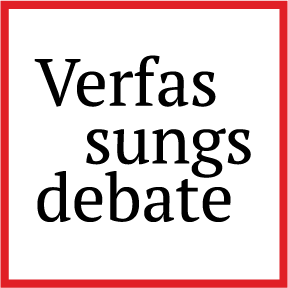The Finish Line of Caster Semenya’s Judicial Marathon
A Wake-up Call for the Swiss Federal Supreme Court and the Court of Arbitration for Sport
Caster Semenya was wronged, and Switzerland – due to the inaction of the Swiss Federal Supreme Court (SFSC) – was held responsible by the Grand Chamber (GC) of the ECtHR. This conclusion to a long judicial marathon is an important vindication for an athlete who saw her career destroyed by a process that violated her right to a fair hearing. Although the judgment comes too late – six years and two Olympic Games after she became ineligible – and offers too little in material compensation (€80,000 pales in comparison to the lost opportunities in sponsorship and prize money), it may nonetheless provide some measure of comfort. The case will also stand tall as her legacy to a new generation of intersex athletes who may rely on the Court’s findings to challenge discriminatory eligibility rules barring their participation in women’s competitions.
For those among us interested in transnational sports law and governance more broadly, this case will be remembered as a significant landmark that will affect the field for years to come. It is the first time that the GC of the ECtHR has had to deal with the intersection between the Convention and the transnational regulation of international sports, and its holdings will no doubt resonate for a long time and influence jurisdictions beyond the European context.
As many readers will know, the case concerns the legality of the specific eligibility rules (the infamous DSD Regulations) imposed by World Athletics (then IAAF) on athletes with a difference of sexual development, and which imposed certain conditions for the participation of intersex athletes in some women’s athletics competitions. The application of these rules led Caster Semenya, a dominating 800m female runner, to become ineligible to compete in international athletics competition since 2019 and to initiate a judicial marathon to challenge the rules before the Court of Arbitration for Sport (CAS) in 2019, the SFSC in 2020, and ultimately reaching the ECtHR, which rendered a first Chamber judgement in July 2023.
This blog post does not revisit further the procedural and factual history of the case (see here for my case note on the ruling of the ECtHR Chamber), but focuses instead on some of the key findings of the Court and discusses their potential impact. It highlights the decision of the GC to portray (accurately in my view) CAS arbitration as a very specific form of arbitration embedded in a transnational governance system in which sports governing bodies (SGBs) are exercising public-like regulatory functions on a transnational scale and sportspeople are placed in a subordinated position.
Given this context, the GC concluded that the forced nature of this arbitration and its intimate relation with the governance powers of SGBs must lead to it being subjected to a heightened scrutiny under Article 6 §1 ECHR. In this regard, much of the ruling is castigating the SFSC for its standard of (non-)review in setting aside proceedings involving CAS awards. The GC does not take gloves in its assessment of the performance of the Swiss court in reviewing the Semenya award and meticulously recollects the many instances in which the Swiss court failed to rigorously assess the ambiguities or incoherencies of the original CAS award. Finally, there is an elephant in the judgement: the question of the independence of the CAS. While the Grand Chamber hints at this concern, it ultimately refrains from addressing it directly.. Yet, as will be argued, the ruling paves the way for a reopening of this fundamental issue.
CAS “arbitration” under heightened Article 6 §1 scrutiny
One of the core contributions of the ruling of the GC is related to its considerations linked to the institutional context in which the CAS operates in the framework of transnational sports governance. Building on its previous findings in the Mutu and Pechstein judgment, the Court goes further in pinpointing the specificity of CAS arbitration and the ambiguity of its relationship with the SGBs of the Olympic Movement.
As a first step, the GC acknowledges the value of the CAS as “a specialised body which is able to give a ruling swiftly and inexpensively” (all emphasis are mine) and stresses that the “recourse to a single and specialised international arbitral tribunal facilitates a certain procedural uniformity and strengthens legal certainty” (Para. 199). It concludes, though not in a very definitive turn of phrase, that “a non-State mechanism of conflict resolution at first or second instance, with the possibility of appeal, albeit limited, before a State court at last instance, could be an appropriate solution in this field” (Para. 199).
Nonetheless, the ruling quickly moves on to stressing “that sports ‘arbitration’ occurs in the context of the structural imbalance which often characterises the relationship between sportspersons and the bodies which govern their respective sports” (para. 200). More specifically, the GC points out that SGBs “exercise powers in the field of international sports competition which are akin to regulation-making powers; in particular, they determine who can compete and under what conditions” (Para. 201). Accordingly, it concludes that SGBs “are in a position to dictate conditions in their relationship with sportspersons, in that they regulate international sports competitions, are able to impose the mandatory and exclusive jurisdiction of the CAS for the examination of disputes relating to those regulations, and exercise structural control over the international sports arbitration system” (Para. 204). Hence, “even more than where arbitration is required by law”, an athlete “must be able to benefit from the safeguards provided for by Article 6 § 1 of the Convention” (Para. 205). Furthermore, the Court deems that “this requirement is particularly important where the ‘civil’ right or rights which are the subject of the dispute correspond under domestic law to fundamental rights” (Para. 206).
This set of findings is fundamental as it draws a clear logical link between the specific transnational governance structure ruling over international sport, which is built around the private power of the SGBs, and the acute need to ensure that the judicial institution in charge of reviewing the exercise of that power, e.g. the CAS, is providing the guarantees enshrined in Article 6 §1 of the Convention to those subjected to the authority of the SGBs. Moreover, the GC concludes that these institutional characteristics call for “a particularly rigorous examination” (Para 209) by the SFSC of an athlete’s case in setting aside proceedings under Article 190 §2 of the Swiss Private International Law Act. In sum, the Court recognises the fact that SGBs are, for good reasons, imposing onto a wide range of sportspeople an exorbitant private judicial process, and that the sole public garantor of this judicial process, the SFSC, should, therefore, exercise a rigorous control over the quality of the justice delivered by the CAS. Yet, up until this day, the SFSC was rather proud of its “benevolence” and “liberalism” vis-à-vis the CAS, which led one of the most seasoned observers and practitionner of the CAS to conclude 15 years ago that for athletes “the CAS is becoming the only instance where they can assert their rights”, this will have to change now.
Taking rights seriously: A wake-up call for the Swiss Federal Supreme Court
The SFSC makes no secret of its liberal stance towards international arbitration, including CAS arbitration. A quick glance through the database of the SFSC will show that from 1 January 2024 to 1 July 2025, the SFSC did not set aside a single CAS award out of 40 proceedings being decided on the merits. Hence, the GC is certainly not erring when it emphasizes the hands-off approach of the SFSC to its exclusive competence to review CAS awards. Accordingly, it is also deserved that the Semenya ruling of the GC (like the ruling of the Chamber) constitutes primarily an indictment of the SFSC’s systematic leniency when considering CAS awards in general and the Semenya award in particular.
More precisely, the GC points out that the CAS in its award had left open the question of the proportionality of the DSD Regulations, “although it was not only at the heart of the applicant’s detailed argument but also decisive for the outcome of the dispute brought by her” (Para. 224). Yet, despite the CAS “rendering ambiguous its reasoning in relation to proportionality, the Federal Supreme Court conducted only a limited review of this aspect of the award” (Para. 229). This leads the GC to conclude that “the examination of this fundamental and detailed aspect of the applicant’s dispute by the Federal Supreme Court, within its competence to review the compatibility of the award with substantive public policy, was not subjected to the particularly rigorous examination called for by the circumstances of the case” (para. 230). Another question touched upon inconclusively by the CAS concerned the inclusion of the 1,500 m and 1 mile events within the list of Restricted Events subjected to the DSD regulation (para. 232). In this regard, the ruling criticises the SFSC for paying “little attention to the question whether the Restricted Events had been selected arbitrarily” (para. 233). Similarly, regarding the CAS’s conclusion that the DSD Regulations “could result in the status of female athletes with DSD being made public” and “confidential medical information could thus be made public”, while justifying it as “an inevitable detrimental effect of the DSD Regulations”, the GC considered that the SFSC “did not sufficiently act on the fact that the CAS had not fully decided this question, despite the fundamental consequences it had for the applicant and indeed for her ability to compete” (para. 234). The ruling also criticised the SFSC for rejecting “without thorough examination, the applicant’s argument comparing her case with the situation in which it had considered a CAS award to be incompatible with public policy in the Francelino da Silva Matuzalem v. Fédération Internationale de Football Association case” (para. 235). Finally, the Court also contested the way the SFSC jumped to the conclusion that the CAS award was not incompatible with human dignity solely by referring to the proclaimed aim of the DSD Regulations and to general declarations of intent of the CAS Panel. It saw in the SFSC’s reasoning “the absence of a sufficiently rigorous examination of whether the impugned outcome was compatible with fundamental rights […]in that its focus was not the consequences complained of by the applicant but rather the theoretical aim of the regulations which had resulted in those consequences” (para. 236).
The GC concludes its assessment by stating forcefully that while “the specific characteristics” of CAS arbitration required “an in-depth judicial review – commensurate with the seriousness of the personal rights at issue – by the only domestic court having jurisdiction to carry out such a task”, the review of the SFSC “not least owing to its very restrictive interpretation of the notion of public policy, which it also applied to the review of arbitral awards by the CAS, did not satisfy the requirement of particular rigour called for in the circumstances of the case” (para. 238) and, hence, violated Article 6 § 1 of the Convention.
Notwithstanding the fact that the SFSC and its longstanding hands-off approach to its review of CAS awards were the primary target of the Semenya ruling, the CAS itself should not underestimate that, implicitly, the Court is also criticizing the quality of its own reasoning regarding the proportionality of the DSD regulations. Under the guise of focusing on the right to fair trial of Caster Semenya, the GC is quite transparent about its skepticism regarding the proportionality of the DSD Regulations and demanding that both the CAS and the SFSC deliver a much more convincing justification for their necessity and proportionality. While it is not a priori excluded that such a justification could be marshaled, it will have to address the many issues and limitations pointed out by the GC in its judgement. In other words, when fundamental rights of athletes are at play, the SFSC and the CAS will from now on be adjudicating under the close supervision of the ECtHR and will have to deliver much more coherent and comprehensive justifications to support the compatibility of the SGBs decisions and regulations.
The elephant in the judgment: The Grand Chamber’s silence on the independence of the CAS
With two colleagues, Cesare R. Romano and Faraz Shahlei, we submitted an Amicus Curiae to the GC aimed at attracting the judges’ attention to the crucial issue of the lacking independence of the CAS. Despite engaging in a relatively long debate on the question during the hearing of the case, the Court ultimately declined to pronounce itself on the matter as Caster Semenya’s legal team had not raised the issue before the hearing (para. 90-91). Yet, as the forceful partly concurring Opinion of Judge Šimáčková illustrates, the question is far from off the table. The judge in her Opinion makes a convincing case challenging the conclusion of the Mutu and Pechstein ruling that the CAS was sufficiently independent. She emphasizes that “through the ICAS, the role of the sports bodies is structurally predominant in the CAS” (para. 21 of the Opinion) and argues that the sports arbitration system “provides an advantage to one of the parties before the CAS in disputes between a sports body and an athlete” (para. 22 of the Opinion). These conclusions are very much in line with the findings of our submission.
In general, the GC’s call for “a particularly rigorous examination” of CAS awards by the SFSC will naturally extend to the examination of the independence of the CAS. Moreover, its recognition that SGBs “exercise structural control over the international sports arbitration system”, a key point raised in our intervention, is an implicit acknowledgement that the independence of the CAS is currently extremely problematic due to the set-up of the ICAS. Indeed, if we are to tolerate the imposition by SGBs of a private justice onto a wide range of individuals (sportspeople, coaches, referees, etc.) involved in international sport, this justice has to display a bullet-proof independence from the private powers that it is supposed to check. In this regard, as pointed out by many (starting with Judge Keller and Serghides in their dissent under the Mutu and Pechstein ruling), it is extremely difficult to square the governance and operation of the CAS with the basic requirements of the existing jurisprudence of the ECtHR on judicial independence. The CAS can anticipate this issue and initiate a reform process to fundamentally reshape (and democratize) its governance structure (for some proposals, see here, here or here), or it can wait for the chickens to continue to slowly come home to roost (starting potentially with the Seraing ruling of the CJEU in August).



